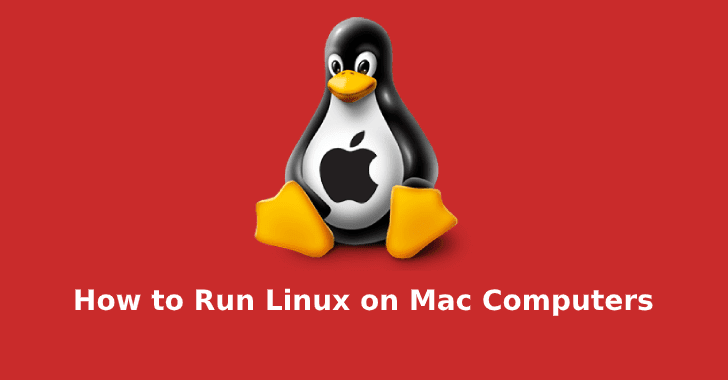

Warning: Disk Utility needs to be used with caution as selecting the wrong device or partition can result in data loss. Set the format to MS-DOS (FAT) and the scheme to GUID Partition Map.Ĭheck you've chosen the correct device and click Erase. Select the USB stick device (you may need to enable the option View -> Show All Devices) and select Erase from the toolbar (or right-click menu). Insert your USB stick and observe the new device added to Disk Utility.

Launch Disk Utility from Applications -> Utilities or Spotlight search. To ensure maximum compatibility with Apple hardware, first blank and reformat the USB stick using Apple's "Disk Utility", but this step can be skipped if you intend to use the USB stick with only generic PC hardware. See Download Ubuntu Desktop for download links. An Apple computer or laptop running macOS.
HOW TO BOOT LINUX ON A MAC HOW TO
How to create a bootable USB stick on OS X/macOS However, I expect some modification is needed to work on other versions of the Air, not to mention other Macs.

HOW TO BOOT LINUX ON A MAC INSTALL
Lastly, this USB method actually worked(!) to install 11.10 onto my MacBook Air 3,1 (late 2010 model). For MacBook Air owners, it is strongly advised to obtain a MacBook Air SuperDrive (no, a regular USB CD/DVD drive does not suffice) and then use that to install through the usual CD route (using the Mac iso for a 64 bit install). In particular, if you have a MacBook Air, which doesn't have an optical drive, then the forums are filled with posts of trying the dd-to-a-partition trick and failing. This doesn't always work, even on the same hardware. The basic method is explained nicely here. One method that has worked for a number of people is to dd the bootable USB key to its own partition on your hard drive and then boot off that partition. Longer answer: (Ok, I lied above.) You can, but "it's complicated". (See this for an explanation of the difference) If you have a newer Mac (64 bit), just remember to use the Mac iso( amd64+mac), not the regular amd64 iso. If your Mac has a working optical drive, use it. Apple doesn't want you to boot an OS other than OS X off USB.


 0 kommentar(er)
0 kommentar(er)
